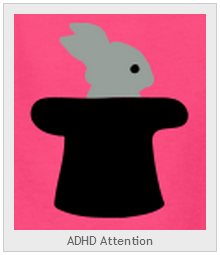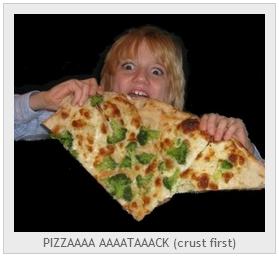ADHD & Interactive Brain Analysis in Boulder
Boulder’s ADHD brain clinic
ADHD (Attention Deficit & Hyperactivity Disorder) has increased over 500 percent in the past 20 years, and it has been estimated that up to 10 percent of all US children have been diagnosed with ADHD. Question is where did this surge come from? Are parents more sensitive to overactive children, has the performance bar for these children been raised, or has it become too easy for schools and parents to demand that their children be put on heavy drugs like Ritalin?
Every human has attention “deficit”. Without such deficit, magic tricks wouldn’t work. Magicians use the art of distraction by focusing the audience on an irrelevant action, such as the release of a white dove or the dance of their burlesque assistant. The audience’s inability to pay attention to two or more actions allows their sleight of hand to go unnoticed.
The scattered picture above is a friend (age 45). We had to dress him up as Freddie Mercury (Queen) and play I Want to Break Free on full volume in order to get him to vacuum clean our meditation space at Interactive Brain Analysis. The room hasn’t been itself ever since.
Magical Attention
Magicians, masters in distraction, know that it’s important to differentiate between two major “attentions”:
“Top-down attention” is when you’re captivated by a book, or a game, or a thought process. This is typically the desired internalized attention; the kind of attention and focus that children need at school. Individuals with great short term memory (also called working memory) are good at focusing on the task at hand and they tend to block out distracting impulses from the outside world.
“Bottom-up attention” comes in from the outside world through our senses. An alarm, a phone call, billboards, large or fast moving objects are examples of this attention grabbing bottom-up input. In our not so distant aboriginal past this bottom-up attention was essential for our survival.
When parents complain about ADHD attention deficit they typically complain about a child’s inability to quickly switch from top-down to bottom-up and vice versa.
LISTEN!
A child is captivated by its own top-down play (or the play with others) and doesn’t listen when the parent wants it to slow down or to quiet down; the parents bottom-up attention grabbing “LISTEN!” goes completely unnoticed.
The reverse example of bottom-up attention problems occur when a child, and an adult for that matter, is too easily distracted by outside impulses, such as tv, toys, animals, or whatever flies by. In these situations they can’t focus on internal thoughts and learning.
Parents and schools have a hard time accepting that this going back and forth between internal and external focus is hard to do. Even for themselves: how easy is it to drive the car and be on the phone at the same time? Magicians know that the two kinds of attention are largely mutually exclusive. They are masters of distraction by making you focus on the wrong thing. ADHD therapy is the opposite of magic: it trains you to focus on the right things.
It’s obvious that the world is moving away from top-down book reading and more and more towards the short attention span tweets and text message blurbs.
Both kids and adults can have ADHD, although it’s a bigger topic for children, because of school pressure and because they are less able to control it. Children with ADHD feel that they are different but don’t know why, and that makes them frustrated, angry and even more unruly. That’s when they tend to get into trouble in class and at home.
It’s a downward spiral, in which the parents and teachers are as much involved as the kid itself. There’s yelling, acting out (on both sides), fights with other kids, classroom disruption, and they will eventually hate to go to school. Drugs are an option to calm the situation down, but most parents hate to sedate their child. There’s a fine line between acting out and free expression; there’s a subtle difference between spontaneity and unruliness.
What we do with ADHD at Interactive Brain Analysis
QEEG brain mapping (Quantitative Electro-Encephalo-Graphy) as part of a well structured neurofeedback therapy, is a non-invasive alternative to drugs, or can be used along side drugs. QEEG is also a good method for testing how effective drugs are. We use high standard 19 electrode EEG neurofeedback to train the brain to focus.
Three kinds of ADHD
Inattentive Only: The child or adult is able to sit still but they easily space out; look out the window and follow the squirrel. They usually don’t get into trouble for bad behavior, but suffer with grades. People in their surrounding (teachers, bosses) feel that they are unable to put themselves fully into it (whatever they are doing). In the past this group was called ADD (Attention Deficit Disorder), but nowadays everything is swept under the moniker ADHD. Girls tend to be more prone to inattentive ADD.
Hyperactive/Impulsive: These individuals are UNABLE to sit still, but they can pay attention. However, when they do pay attention it can become an obsession. For example, the boy likes rockets. They blow up. That’s what boys like. But then it is about rockets, rockets, ROCKETS, ROCKETS!!, ROCKETS!!!!!!! Video games fit in this space. The game has their full attention, while they run amok, jump, shoot, kill and maim in their virtual reality. In the meantime, the parent, who’s calling for dinner time, is cut out.
Combination of Inattentive/Hyperactive/Impulsive: Children in this category show all three symptoms; unable to pay attention, hyperactivity and impulsive behavior. This is the most common attention disorder.
Boulder Psychotherapy Clinic for ADHD
Interactive Brain Analysis is a Boulder ADHD clinic specialized in ADHD and the use of:
+ ADHD Diagnosis through Quantitative EEG Brain Map Analysis
+ ADHD Therapy through EEG Neurofeedback to retrain the brain
Continue reading what our Interactive Brain team can do for you as a Boulder ADHD Therapist on the ADHD Boulder Therapy page. And of course, clients from Longmont, Arvada, Golden, Westminster and Louisville are more than welcome too.



